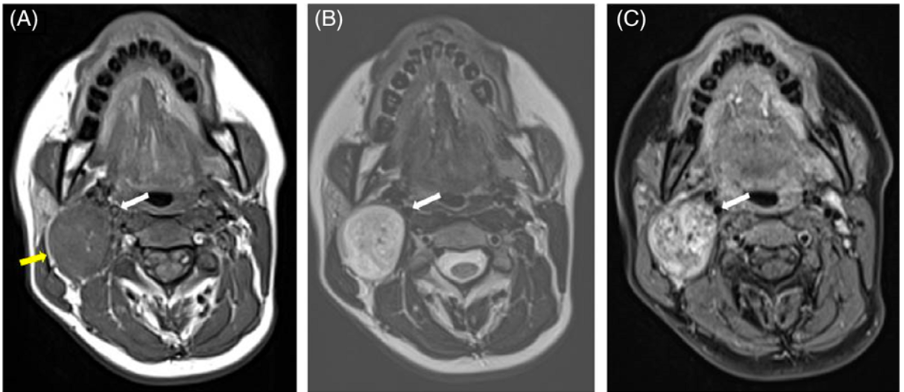Vagus Nerve Tumors
(Vagal schwannomas)
The vagus nerve is the main nerve supplying sensation and movement to the throat and voice box. This nerve gives off many important brances in the neck that run to the throat (pharynx) and voice box (larynx) to supply the muscles that move these areas and the receptors that give sensation to these areas.
Rarely, a benign tumour can arise from cells covering one of the nerve fibers of the vagus nerve. These cells are called Schwann cells and the tumour is called a vagal schwannoma. The tumour causes other nerve fibers in the vagus nerve to become splayed and stretched over the surface of the tumour. As the tumour enalrges, the nerve fibres become more stretched which can lead to issues with swallowing and voicing (Figure 1).
Although rare, vagal schwannomas have classically been difficult to remove due to high rates of dysphagia (swallowing difficulty) and hoarseness after surgical removal. However, by utilising new techniques of vagus nerve monitoring (described in the intraoperative neuromonitoring section), it is now possible to remove these tumours with low rates of complications.
Figure 1: A vagal schwannoma (purple) arising within the vagus nerve (yellow). Note that the vagus nerve fibres are splayed over the surface of the tumour.
A/Prof Sinclair has extensive experience in treating these tumours and was a leading member of the surgical team at Mount Sinai who performed the first enucleation of a vagal schwannoma with sensory and motor vagus nerve fiber monitoring during the procedure (see list of published articles under the publications tab). This specialised surgical technique allows functional nerve fibers to be preserved and is associated with high rates of swallowing and voice preservation. A/Prof Sinclair is very excised to be able to introduce this vagus nerve preservation technique into Australia.



